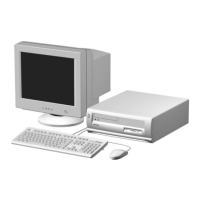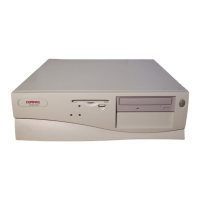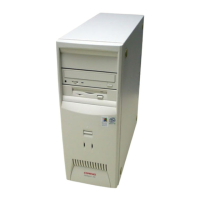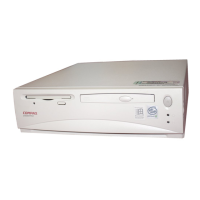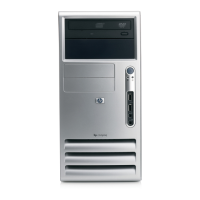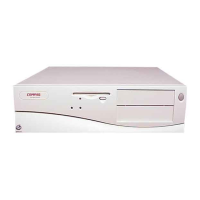
Do you have a question about the Compaq Deskpro 4000 and is the answer not in the manual?
Lists the core features included in all models of the computers.
Explains the system's architecture, buses, and key components.
Describes the Pentium II processor, its cartridge, and cache.
Details system memory, DIMM sockets, SDRAM, and ROM components.
Lists chipsets used on the system board and their functions.
Covers the integrated network interface controller and its features.
Explains graphics controllers, memory, and resolution differences.
Details diskette and hard drive interfaces and specifications.
Covers serial and parallel port functionalities and standards.
Describes the USB interface, its speed, and hot-plugging capability.
Details the subsystem architecture with Pentium II processor and memory.
Explains the Pentium II processor's SEC cartridge and internal architecture.
Covers MMX instructions for multimedia acceleration and their benefits.
Discusses considerations for changing or upgrading the processor.
Explains how DIP switches select bus-to-core frequency for the Pentium II.
Details system memory, DIMM sockets, and SDRAM performance.
Guides on installing and expanding system memory with DIMMs.
Lists configuration registers for processor/memory and PCI bus operation.
Describes the PCI bus, its implementation, and devices/functions.
Details the pinout of the 32-bit PCI bus connector.
Explains the bus master/target arbitration scheme and its signals.
Covers PCI bus transactions, address/data transfers, and cycle types.
Details I/O and memory cycles and addressing.
Explains PCI configuration cycles and registers.
Details PCI interrupt signal routing and sharing with ISA interrupts.
Covers PCI configuration parameters handled by the PCI/ISA bridge.
Describes the Accelerated Graphics Port (AGP) bus and its features.
Explains AGP bus interface configuration using PCI registers.
Describes the Industry Standard Architecture (ISA) bus for I/O peripherals.
Covers ISA bus transfer rates, addressing, and control signals.
Explains Direct Memory Access (DMA) for ISA devices.
Details DMA page registers for defining the complete address for DMA channels.
Lists DMA controller registers and their I/O port addresses.
Discusses microprocessor interrupts: maskable and nonmaskable.
Explains maskable interrupts, signal routing, and priorities.
Covers non-maskable interrupts (NMI, SMI) generation and status.
Details the interval timer function, counters, and registers.
Discusses ISA configuration parameters managed by the PCI/ISA bridge.
Covers RTC and configuration memory functions provided by the I/O controller.
Maps configuration memory locations to specific functions and default values.
Provides system I/O map and register accessing methods.
Lists system I/O ports and their associated functions.
Explains 87307 I/O controller configuration and PnP registers.
Covers hardware support for security, identification, and power.
Explains flash ROM write protection and security features.
Details power-on and administrator password protection mechanisms.
Describes how I/O functions can be disabled via configuration registers.
Covers QuickLock and QuickBlank features for user security.
Explains temperature sensors and their role in system shutdown.
Covers Advanced Power Management (APM) firmware and software support.
Covers the EIDE interface, controllers, and supported devices.
Explains IDE interface configuration and control via registers.
Lists PCI configuration registers for the IDE controller.
Details IDE bus master control registers.
Describes ATA control registers for drives and interface mapping.
Covers the diskette drive interface and its operational phases.
Explains diskette drive configuration and activation.
Lists PnP configuration registers for the diskette drive interface.
Details diskette drive interface control via I/O registers.
Details serial interface control via registers and BIOS functions.
Covers parallel interface control via BIOS functions and registers.
Covers 8042 control functions using I/O mapped ports.
Covers USB control via I/O registers.
Explains Pulse Code Modulation (PCM) for audio processing.
Details control of the audio subsystem via I/O mapped registers.
Explains power control via the PS On signal and power button operations.
Describes BIOS functions for accessing CMOS and NVRAM.
Explains Advanced Power Management (APM) BIOS support.
Lists hard drive error messages and their probable causes.


